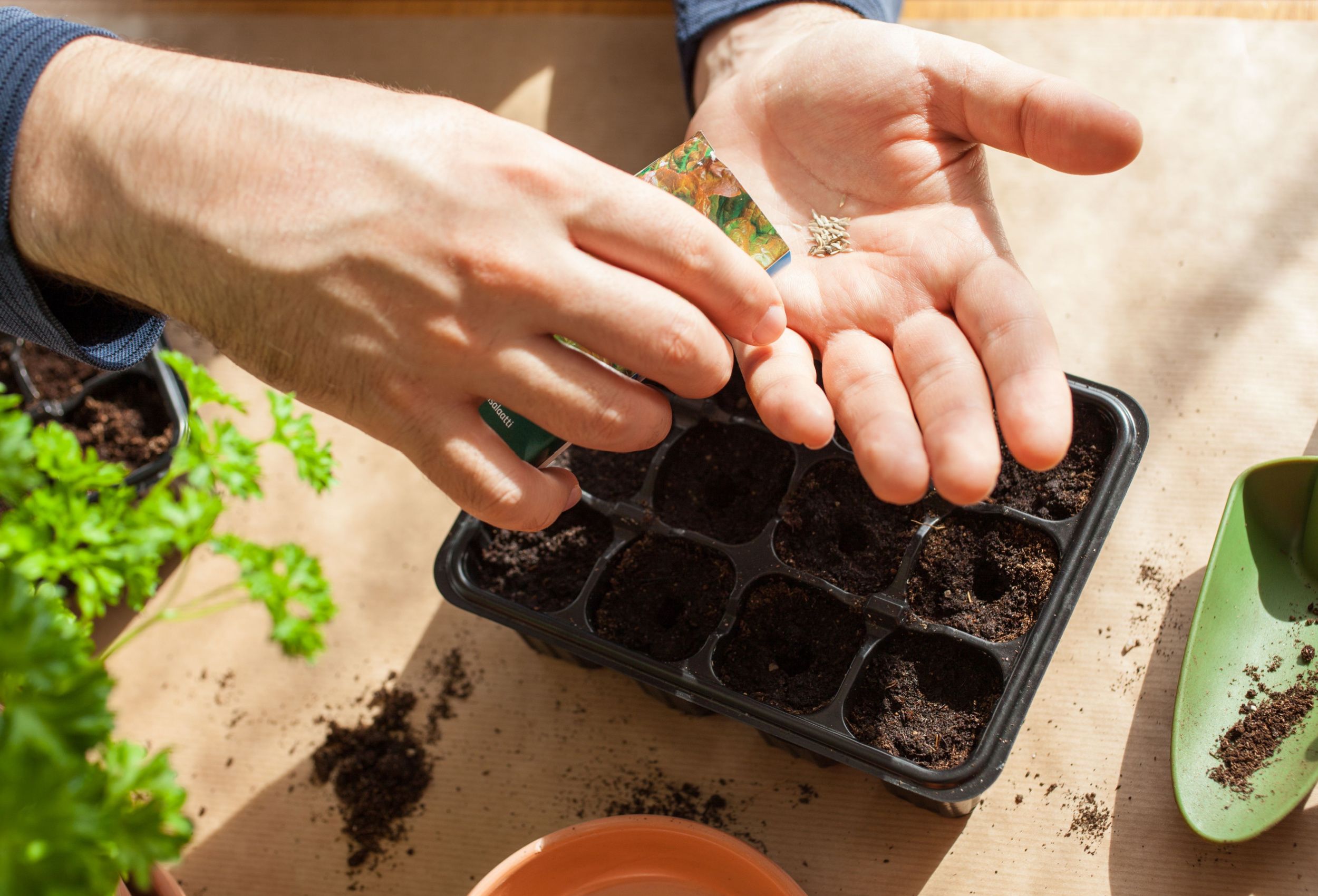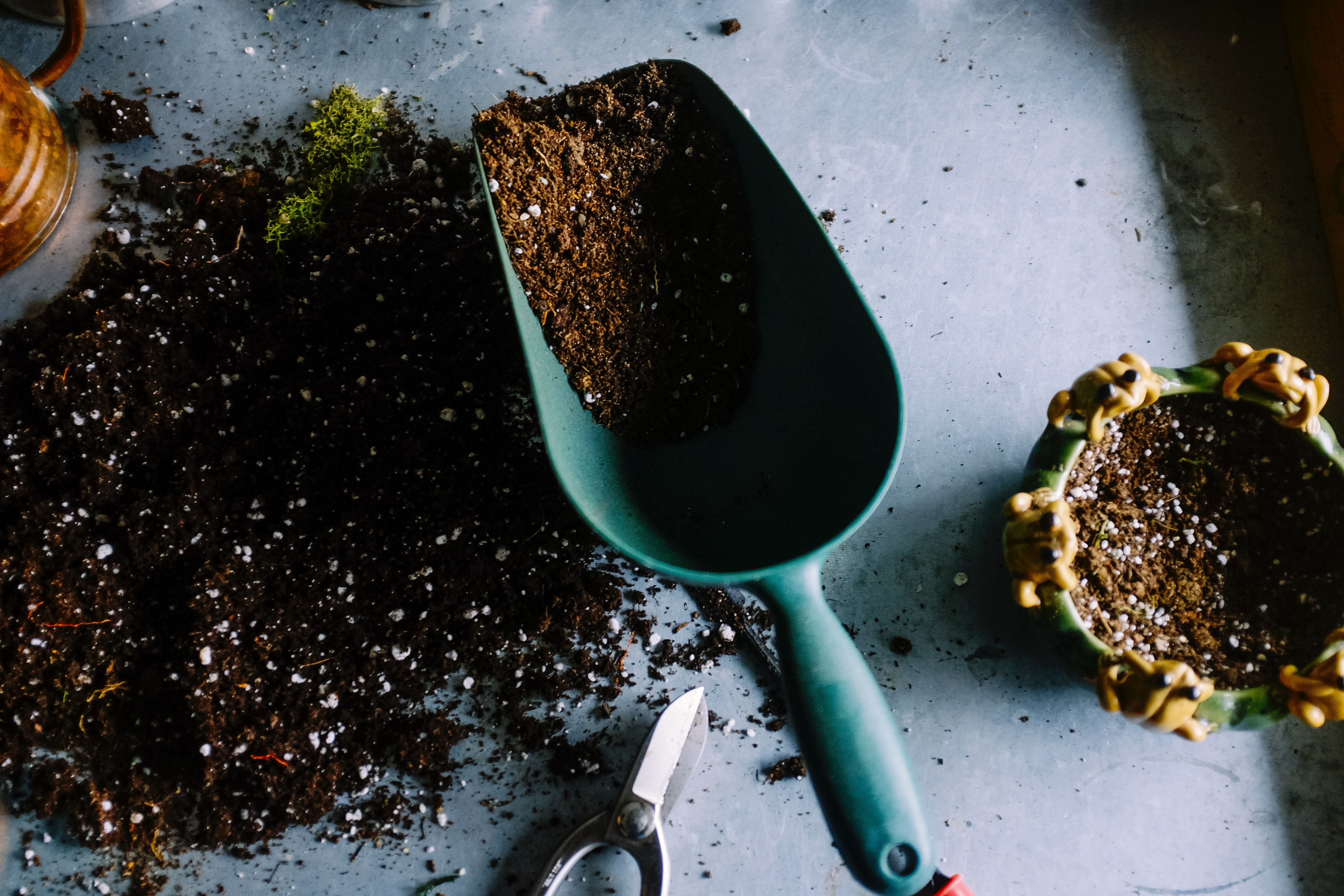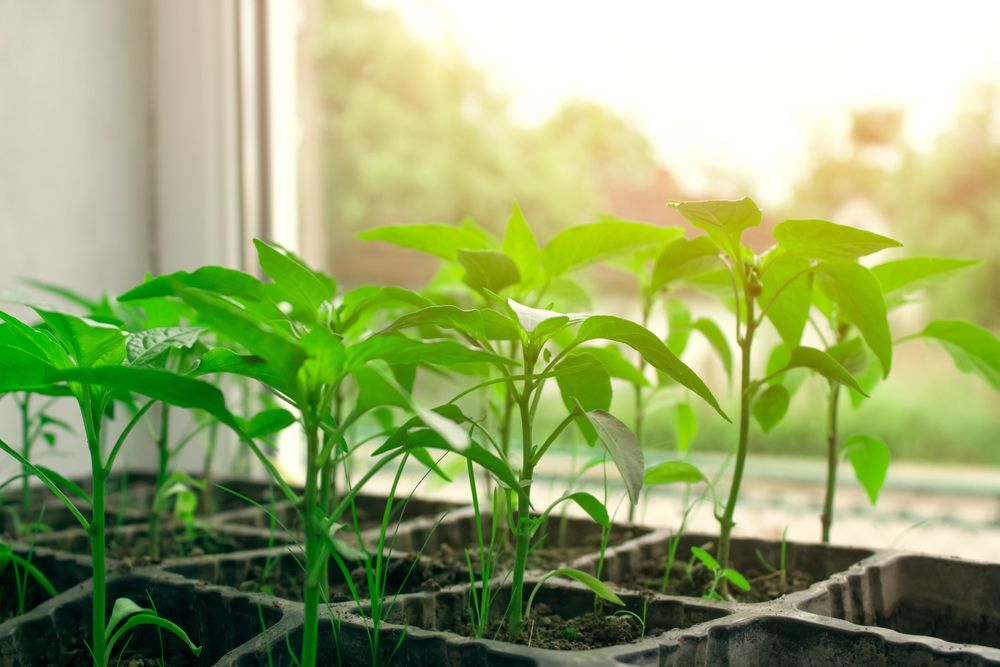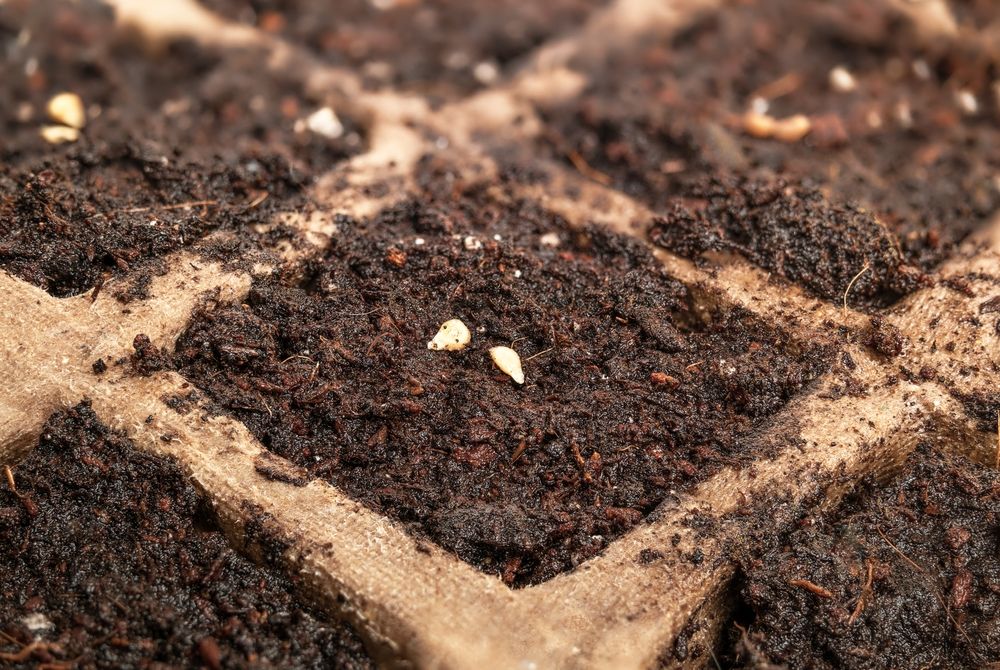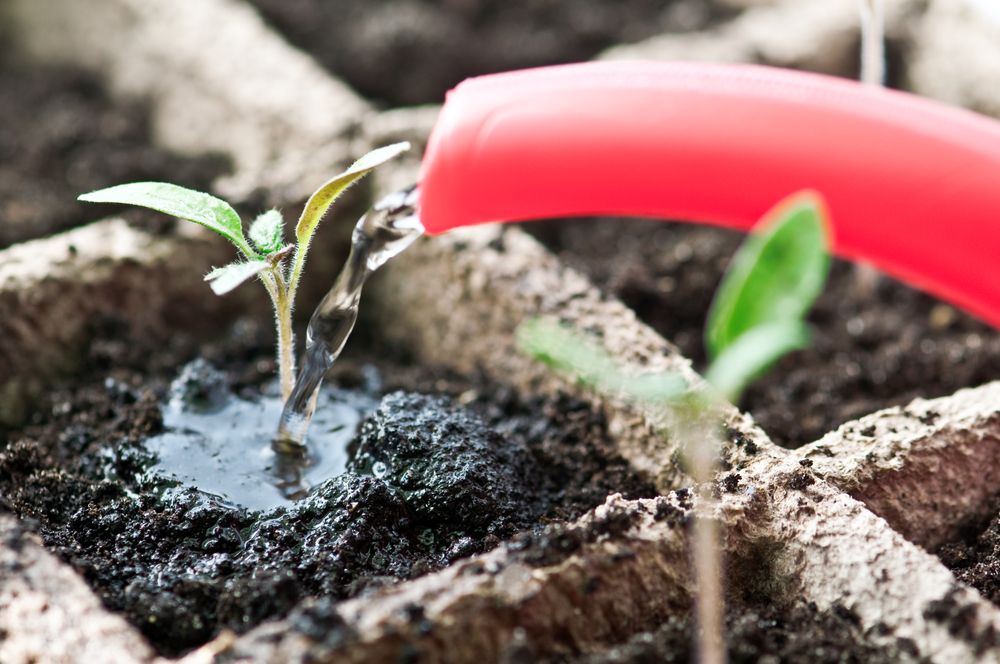Starting seeds indoors is a great way to jump-start the growing season. You can grow vegetables like tomatoes and beetroots, which are hard to grow in chilly areas where the growing season is relatively small. This method allows gardeners to efficiently care for baby plants in a controlled and safe environment.
When it comes to sowing seeds, there can be a lot of unknowns and potential pitfalls; One wrong turn and your seeds fail to germinate. If you want to get your garden off to a great start, it's essential to know how to avoid the most common mistakes when sowing seeds indoors. Explore four of the most frequent mistakes people make when sowing seeds and how to avoid them.
1. Using the Wrong Soil
Image credits: Neslihan Gunaydin via Unsplash
With potting mixes being lightweight and soilless, they offer a sanitized environment that is less susceptible to disease. These can provide aeration, adequate drainage, and the right amount of water retention for plants growing in containers.
On the contrary, potting soil has more weight to it which blocks airways leading them unable to breathe properly, while an excess of moisture could cause root rot – threatening their very existence!
Some gardeners neglect this very point. Understanding what type will cater best to your plant's specific needs is imperative. Container gardening might require something different from actual outdoor planting, such as using real garden soil or sand instead.
How to Fix or Prevent It
Use good base soil for your plants; well-aerated, uniform, and loose. Keeping that in mind, opt for a lightweight soil-less potting mix. These mixes comprise ground peat moss, vermiculite, perlite, and some fertilizer.
Soil-less mixes are sterilized to lower the risk of losing your precious seedlings to soil-borne diseases. These mixes are designed to provide maximum aeration, good drainage, and all the moisture the seedling needs for proper growth.
If you want to avoid buying packaged seed starting mix, you can create your own.
2. Insufficient Light
Image credits: Iryna Mylinska via Shutterstock
One of the biggest mistakes when starting seeds indoors is not providing the plants with sufficient light. Too little light may not inhibit the plant's germination, but can lead to weak and leggy seedlings, a stunted root system, and poor plant growth.
The right amount of light is crucial for healthy seedlings -- at least 12 to 16 hours of bright light each day is sufficient. If your seedlings don't get enough sun, say goodbye to your plants.
How to Fix or Prevent It
Fortunately, this issue is easily fixable. You can keep your seedling under a grow light or an LED light to supplement the sunlight. This will ensure that your seedling gets ample light required for the development.
If you don't have enough natural sunlight, you can use a grow light or LED light to supplement the sunlight. Position the light no more than four inches above your seedlings; two inches is ideal.
Be sure not to leave the light on all the time. Your plants need some dark periods for proper development as well. Adding a low-cost timer to your light setup can give your plants the right amount of light and darkness.
3. Starting Seeds at the Wrong Time
Image credits: sophiecat via Shutterstock
When planting seeds indoors, planting them at the wrong time can cause many problems. If you plant your seeds too early, they may outgrow their containers before the weather is warm enough to transplant them outside.
If you wait too long, your plants may not have enough time to mature and produce fruit before the end of the season.
For instance, tomatoes require five to eight weeks before they are ready to be transplanted outside. On the other hand, vegetables like onions and celery require eight to ten weeks before they are ready to be moved into the garden.
So to get the best crop, you must plant your seeds inside at the ideal time.
How to Fix or Prevent It
Depending on your environment, you may need to start your seeds indoors several weeks before the last frost date. This will ensure that the plants are ready to be transplanted outside when the weather warms up.
A general rule of thumb is to plant seeds six weeks before your last frost date. The shortest time for seeds is four to six weeks before they are ready to be planted outside.
The timing, however, varies according to the different types of vegetables, herbs, and fruits, but you can always check the seed pack for detailed instructions on your selected vegetable.
4. Too Much or Too Little Water
Image credits: Smit via Shutterstock
A widespread mistake is finding a proper watering schedule. Improperly watering will cause the seeds to fail to germinate, and plants ultimately die.
Here are some everyday situations you may face when watering your plants.
- Overwatering. When you overwater your seedlings and seeds, they tend to deprive the roots of oxygen, leading to root rot, diseases, and, ultimately, the death of your plant.
- When seeds are kept continuously soaking wet, they develop a fungal disease known as damping off. The fungi that cause the disease, Rhizoctonia and Fusarium, can swiftly kill an entire batch of seedlings. Seeds may be full of promise, but when seedlings fail to sprout and show signs such as water-soaked cotyledons (the first leaf to appear), thin stems with grayish-brown sunken spots, wilting green-gray leaves, and fluffy white cobweb growth under high humidity – it can indicate a fungal infection.
- Underwatering. On the other hand, When you under-water your plants, you don't provide enough water to develop fully. As a result, seeds fail to germinate, and your seedlings have dried leaves and show signs of weakness.
- Dry Soil. If you let the soil dry out between watering, your seeds will fail to germinate. Tiny seeds cannot store enough water to survive and will not germinate once they have dried out.
How to Fix or Prevent It
Once you sow your seeds, water your pot from the bottom by placing it in a shallow pan of water and waiting until the top of the mix is damp. The container should be removed from the pan and allowed to drain.
Your plant's water needs will vary at different stages of its growth. To make sure that your seeds germinate, provide them with consistent moisture. To achieve this:
- Slip your whole flat or pot into a clear plastic bag after watering it.
- Keep the plastic 1 1/2 inches from the soil and keep it out of direct sunlight, or the temperatures may increase, ultimately killing your plant.
- Remove the plastic as soon as the first seedling leaves appear.
- Transfer to a pot and water your seedlings as per the package instructions.
If your plant has developed a fungal infection, you need to dispose of your plant and rinse your containers thoroughly to get rid of any residue.
Temperature
Image credits: wisely woven via morguefiles
Temperature plays a vital role in seed germination. At optimum temperature, seeds sprout easily and move on to their next growth stage swiftly.
Without adequate heat, the length of time it takes to germinate will increase, and their germination percentage rate will fall significantly. A longer germination time also makes the seeds vulnerable to diseases.
How to Fix or Prevent It
For most vegetables and seeds, the optimum temperature for seed germination is 70 to 80 degrees Fahrenheit.
Keep your seed containers in a warm location in your house when starting seeds indoors. The areas can include the top of your refrigerator or next to a sunny window.
But these spots might not be warm enough during winter months. To ensure that your seeds get the right temperature, you can invest in heat pads. A heating pad and a thermostat can keep the soil temperature in the perfect range.
Heat mats are necessary for plants that get a boost from bottom heat , such as melons and peppers. Bottom heat helps establish roots. Be sure to only invest in heat pads designed for seed germination and read the manufacturer's instructions carefully.
Remove your heat pad after your seeds have sprouted unless it is extra cold. Too much heat after germination can cause leggy seedlings.
Note: Do not heat seeds above 95 degrees Fahrenheit, as it can sterilize or kill them.
On Your Way to Healthy Seedlings
Gardening is a skill you will acquire with time, but learning from the mistakes of fellow gardeners puts you ahead of the game. Armed with the basic knowledge, you can grow healthy, beautiful seedlings that you can later plant in your garden.
When you plan to start seeding indoors, you must know what seeds you can plant indoors and what you need to avoid. Vegetables and herbs like beans, dill, and carrots are not suitable for planting indoors. These crops, when grown indoors, develop a weak root system, or the quality of the crop is not up to par.
Comment below and share some mistakes you learned while starting your seeds indoors!

